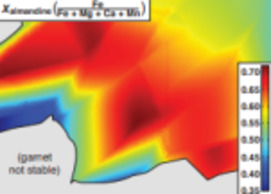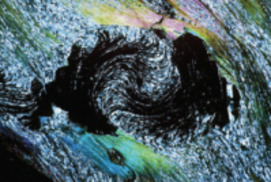Garnet: Witness to the Evolution of Destructive Plate Boundaries
Thanks to its unique chemical and mechanical properties, garnet records evidence of rocks’ paths through the crust at tectonic plate boundaries. The compositions of garnet and coexisting mineral phases permit metamorphic pressure and temperature to be determined, while garnet’s compositional zoning allows the evolution of these parameters to be constrained. But careful study of garnet reveals far more, including the dehydration history of subducted oceanic crust, the depths reached during the earliest stages of continental collision, and the mechanisms driving heat and mass flow as orogens develop. Overall, chemical and textural characterization of garnet can be coupled with thermodynamic, thermoelastic, geochronologic, diffusion, and geodynamic models to constrain the evolution of rocks in a wide variety of settings.
Garnet: Witness to the Evolution of Destructive Plate Boundaries Read More »



